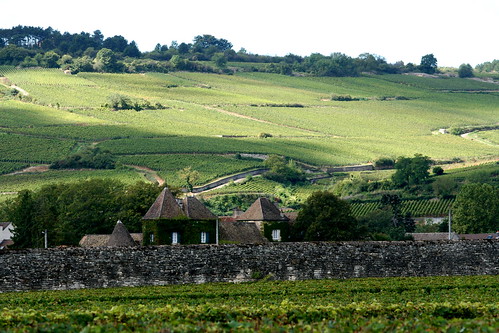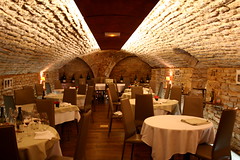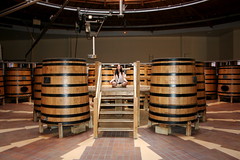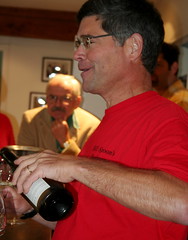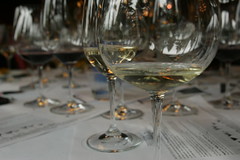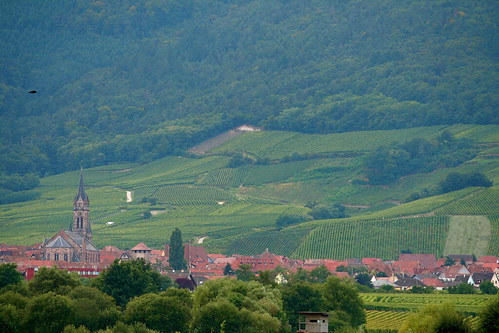
The route arriving in Alsace by way of Champagne takes you over the famed Vosges Mountain range to a lush valley, more Germanic than French, where Riesling reins supreme. The Alsatian valley is a long and narrow one, dotted with historical villages, each with a steeple peaking through the red-tiled roofs and brightly coloured buildings of yellow, turquoise and red all decorated with bougainvillea spilling from every window sill.
Alsace is renowned for its production of single noble grape varieties vinified to preserve the freshness and purity of the fruit and the minerality of the soils, packaged in elegant flûted bottles. Typically dry to off-dry, there are also two other classifications of Alsatian wines depending upon the ripeness of the grape: the sweeter styles of Vendange Tardive (Late Harvest) and the botrytis-affected Selection de Grains Nobles. The top examples of Alsatian wines have the ability to age for decades. Organic and biodynamic vinification and minimal intervention winemaking is the status quo for this region.
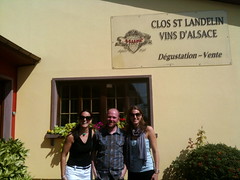 Clos St Landelin, René Muré
Clos St Landelin, René Muré
This is a family-driven winery as we were welcomed into the tasting room by René Muré, the 11th generation of the business. Both children, Thomas and Véronique work at the winery and in the vineyards as well. The nurturing and care given by the family to the vines, which surround the domaine, is evident in the glass. Common among many Alsatian winemakers, René Muré produces the full range of varietals and styles of the region.
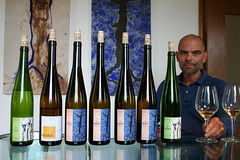 Domaine André Ostertag
Domaine André Ostertag
The front gates of the modest Ostertag Domaine open to a tranquil backyard lined with well-tended, biodynamically farmed vines. André classifies his wines into 3 categories, according to the expression of the unique terroirs: ‘Vins de Fruit’ wines emphasize the purity of the fruit, ‘Vins de Pierre’ expresses the soils and ‘Vin de Temps’ includes the wines that have the greatest longevity. The captivating labelling is another personal touch to the wines, as each bottle is adorned with the original artwork of André’s wife. André’s gentle nature revealed itself during a stroll trough his pet project: a small plot of vines that he planted in a yin yang formation above his cellar. It must be said that all 3 styles embody the passion, intensity and austerity of the winemaker himself.
 Domaine Weinbach
Domaine Weinbach
Colette Faller et ses filles
The wines produced by this family are of outstanding quality as each exhibits the power, character and elegance of the women behind the Domaine. The winery and family home are one, located in the middle of the walled Grand Cru Clos des Capucins. Greeted at the door by the family monarch, Colette Faller, we tasted 19 unique wines with the sophisticated Catherine at their dining room table while her mother prepared the morning breakfast in the adjacent kitchen. Where else in the world would you taste top flight Rieslings to the smells and crackle of bacon? Each wine was exquisite.
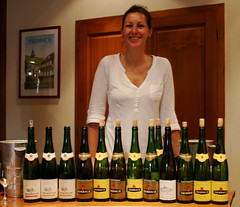 Maison Trimbach
Maison Trimbach
Maison Trimbach is a big player from the region, as evidenced by the company with whom we shared the extensive tasting: top buyers from around the world. Led by the young and graceful Anne Trimbach, who commanded the room with ease and charm, we tasted the range of the Trimbach portfolio including back vintage examples of their prestige and collection wines. The wines, especially the Cuvée Frédéric Emile and the domaine’s top wine, Clos Sainte Hune, are benchmark examples of Alsatian Rieslings. We wrapped up our day with a tour through the winery which houses both traditional and modern equipment and the rustic family cellars.
Alsatian wines, with their purity, power and broad food pairing abilities, are enough to draw any wine enthusiast to the region. However it is the charm of the villages and the openness of the people with their emphasis on family that will make every visitor a fan, leaving wanting more.
 We spent a day in the sub-region of Sauternes, home of the greatest sweet wines in the world. We were welcomed at Château Doisy-Védrines by the owner Olivier Casteja for a tour the property and a lunch in his modest, 2-storey farmhouse. Doisy-Védrines is situated in Barsac, within the Sauternes appellation, and has been owned by the Casteja family for generations.
We spent a day in the sub-region of Sauternes, home of the greatest sweet wines in the world. We were welcomed at Château Doisy-Védrines by the owner Olivier Casteja for a tour the property and a lunch in his modest, 2-storey farmhouse. Doisy-Védrines is situated in Barsac, within the Sauternes appellation, and has been owned by the Casteja family for generations.  Olivier toured us through the vineyards, explaining the process with which they make their sweet wines. He highlighted their low yields, the effects of Botrytis rot on the grapes and the arduous hand-harvesting procedure that spans for weeks to months; each step essential to the final product. Our 5-course lunch was paired with Doisy wines, with vintages dating back to 1970. It was fascinating to experience how well the sweet wines paired with each course.
Olivier toured us through the vineyards, explaining the process with which they make their sweet wines. He highlighted their low yields, the effects of Botrytis rot on the grapes and the arduous hand-harvesting procedure that spans for weeks to months; each step essential to the final product. Our 5-course lunch was paired with Doisy wines, with vintages dating back to 1970. It was fascinating to experience how well the sweet wines paired with each course.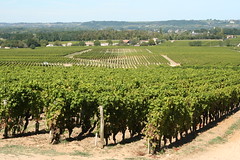 The iconic Château d’Yquem is considered to produce the finest dessert wine in the world. During this rare opportunity to tour the property, we learned about the laborious process of making this exceptional wine. Sauternes is produced by grapes which have been attacked by a fungus called Botrytis cinerea, also known as Noble Rot, that partially raisinates the grapes.
The iconic Château d’Yquem is considered to produce the finest dessert wine in the world. During this rare opportunity to tour the property, we learned about the laborious process of making this exceptional wine. Sauternes is produced by grapes which have been attacked by a fungus called Botrytis cinerea, also known as Noble Rot, that partially raisinates the grapes. 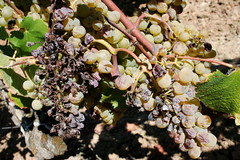 A unique combination of weather is required in order for noble rot to take form (cool misty mornings followed by warm dry afternoons) otherwise grey rot will develop, spoiling the grapes. Hand harvested one grape at a time over multiple passes through the vineyard (up to 14 for d’Yquem), the production of this wine is not only painstaking, but also a gamble with nature, as some years, when the conditions are not ideal, no wine is produced. The wines are reflectively expensive.
A unique combination of weather is required in order for noble rot to take form (cool misty mornings followed by warm dry afternoons) otherwise grey rot will develop, spoiling the grapes. Hand harvested one grape at a time over multiple passes through the vineyard (up to 14 for d’Yquem), the production of this wine is not only painstaking, but also a gamble with nature, as some years, when the conditions are not ideal, no wine is produced. The wines are reflectively expensive. 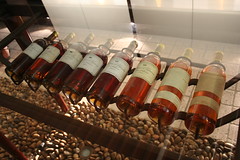 However a good Sauternes is an experience like no other for the senses. This nectar is deep gold in colour, lusciously sweet yet zesty and fresh, with rich tropical and earthy aromas and flavours that linger in your mouth for a very long time.
However a good Sauternes is an experience like no other for the senses. This nectar is deep gold in colour, lusciously sweet yet zesty and fresh, with rich tropical and earthy aromas and flavours that linger in your mouth for a very long time.